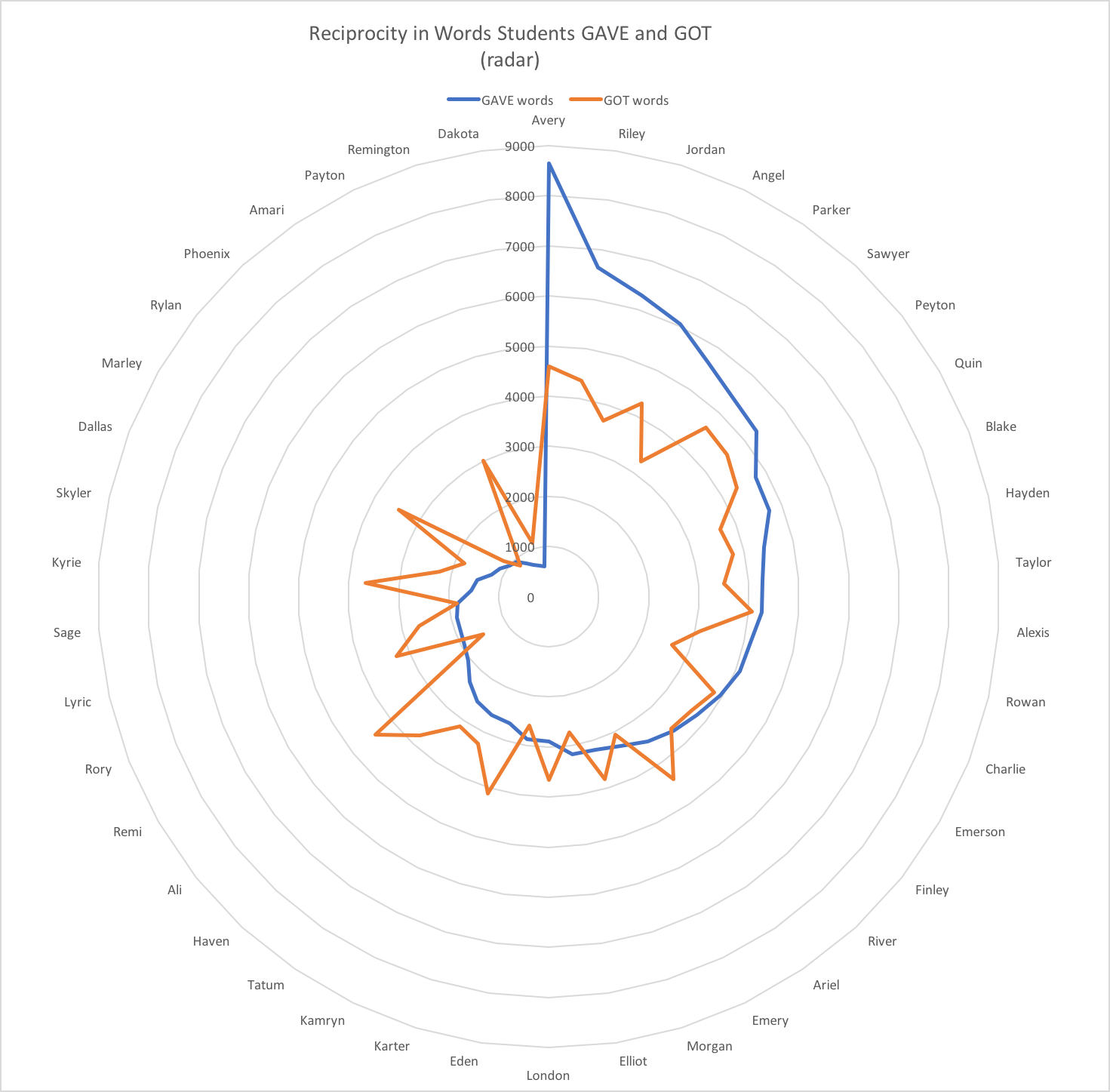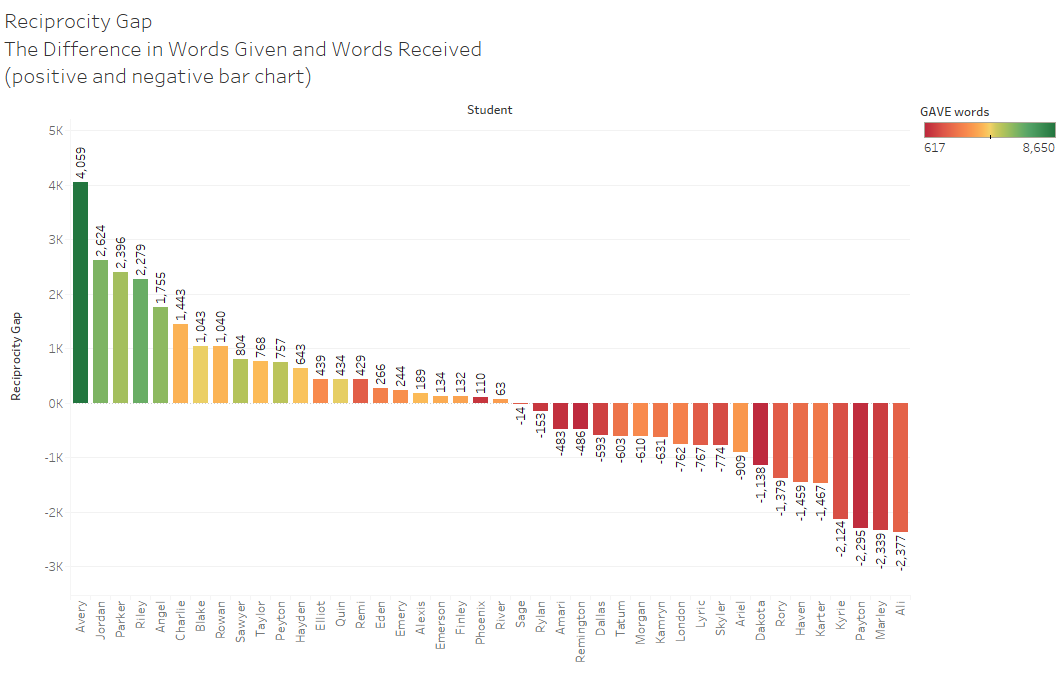In peer learning, reciprocity matters. In Eli Review’s open-source student module on “Feedback and Improvement,” we encourage students to write comments according to a Golden Rule:
“When you know what you want to get from feedback, you have a better idea of the kind of feedback you should give.”
Giving the kind of feedback they’d like to receive encourages students to think in terms of how their own contributions to peer learning shape other students’ experiences.
When students are confident that they’ll get back from peers what they put in as reviewers, they are happy. When students work hard at being helpful reviewers and don’t get helpful feedback in return, they are grumpy. The feedback culture of a class—happiness or grumpiness—has a lot to do with the perceived balance in the feedback that students gave and got.
Seeing Reciprocity
Jeff Grabill’s assertion that “you can’t teach what you can’t see” certainly applies to reciprocity. When each student writes 3-5 comments on 2-4 drafts in a single review, seeing reciprocity even from a quantity standpoint is difficult.
Eli Review’s analytics on reciprocity recently changed. Before April 2018, reciprocity was described by the number of comments a student gave versus the number of comments they received. The new version uses word count instead of comment count because we’ve found that word count is more descriptive of reviewer labor.
To help instructors see reciprocity in terms of word count, we have developed three different visualizations:
- Bar Chart for Words Students Gave and Got
- Radar Chart for Words Students Gave and Got
- Reciprocity Gap Bar Chart showing the Difference between Words Students Gave and Got
We present each version below, and then invite readers to comment and vote.
Each chart shows the same data from one sixteen week first-year writing course. Student’s names have been replaced by random names. This data represents reviewers’ contributions in 13 reviews.
Bar Chart for Words Students Gave and Got
This version displays the words students GAVE in blue bars and GOT in orange bars. Each horizontal line in the grid represents 1,000 words or 4 pages in feedback. Students are sorted based on word count given, since giving feedback drives learning more than receiving it.

Radar Chart for Words Students Gave and Got
This version displays the same information as the bar chart above in a radar chart. The blue spiral of effort from the lowest engaged reviewer Dakota to the highest engaged reviewer Avery contrasts with the orange line, which indicates how many words these students received. Each gray line in the web represents 1,000 words or 4 pages in feedback.
Students with blue spikes in the charts are super peers. They may not be getting enough feedback; their writing may be too strong for peers to critique. These skilled students may need extra attention to stay engaged.
The students with orange spikes are writers with problems peers know how to talk about. They are getting what they need from peer learning. They need extra help learning how to give more helpful feedback, and they may benefit from knowing about the peer norms for effort.

Reciprocity Gap Bar Chart
This chart shows the difference between the words students GAVE and GOT in feedback. A positive number indicates that the student gave more words than they received. A negative number indicates the student received more words than they gave. The the intensity color–from green to gold to red–reflects the number of words the student gave.

HELP: vote for the most helpful visualization
Please tell us what you think about these reciprocity visualizations by filling out this survey.
Bonus points to reviewers who describe-evaluate-suggest!



